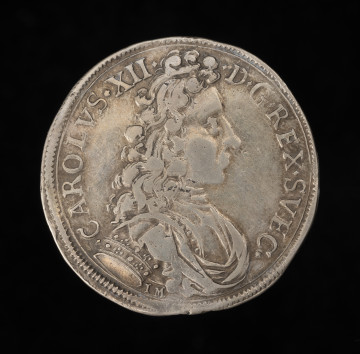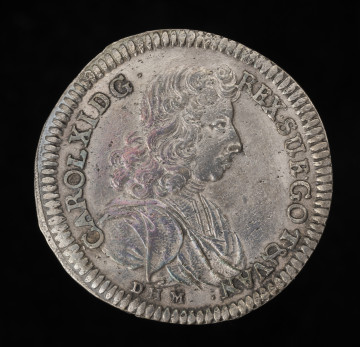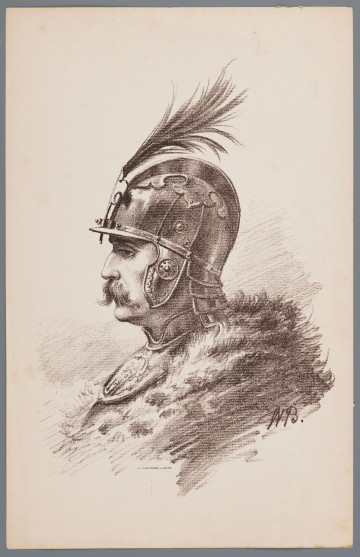
2/3 of a thaler (gulden)
1706
National Museum in Szczecin
Part of the collection: European classics of modernity
Ernesto de Fiori came from an Austrian family with Piedmontese roots. He studied briefly under Gabriel von Hackl at the Munich academy, but was artistically shaped by the international circles in Rome and Paris. After the First World War wanderings and the Zurich asylum, he settled briefly in Munich before moving to Berlin in 1921. In the bustling capital, Fritz Gurlitt's salon promptly organised a monographic exhibition for him, shortly afterwards Alfred Flechtheim was given exclusive rights to represent the artist. In his gallery, he offered a permanent presentation of his latest works, while the press organ Querschnitt published drawings by the artist and reports on purchases of his works for museum collections. From 1922 onwards, sculptural portraits of de Fiori began to appear. de Fiori, who was married three times and whose personal charm was compared to the beauty of Sandro Botticelli's characters, became a favourite of Berlin society. Among the stars he immortalised were the Swedish dancer Carina Ari, the German actress Elizabeth Bergner, the first lady of Israeli theatre Chana Rovina and, above all, Marlene Dietrich, whose séance at de Fiori's atelier was covered by the most important national media in 1931. In turn, the artist published an account of two portrait sessions with Reich President Paul von Hindenburg (1928). Their effect, known from several stucco casts and ten bronze casts, adorned many public collections, including the City Museum in Szczecin. The smooth surface of his early compositions gave way to an impressionistic treatment of volume, derived from the proposals of Auguste Rodin and picked up at this time also by other German artists, including Georg Kolbe and Renée Sintenis. The divergence of de Fiori's work, which paradoxically evolved in the opposite direction to the classicism of official sculpture, with the aesthetic views of the theoreticians of the Third Reich, as well as the loss of support for Flechtheim, who became for the Nazis a symbol of Jewish-Bolshevik degenerate art, contributed to the weakening of the artist's position. When some of his works were withdrawn from museums, de Fiori decided to emigrate to Brazil.
Szymon Piotr Kubiak
Author / creator
Dimensions
cały obiekt: height: 37 cm, width: 23,5 cm
Object type
sculpture
Creation time / dating
Creation / finding place
Identification number
Location / status

1706
National Museum in Szczecin

1687
National Museum in Szczecin

1913
National Museum in Lublin
DISCOVER this TOPIC
National Museum in Szczecin
DISCOVER this PATH
Educational path